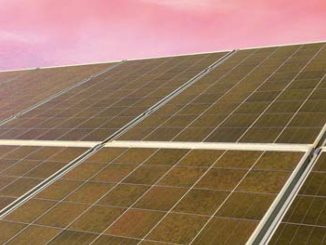 ACME has a project portfolio of around 1,800 MW with an operational capacity of over 600 MW. Around 10 per cent of its total capacity is based on thin-film technology while the remaining projects are based on polycrystalline technology. Manoj Kumar Upadhyay, founder and chairman, ACME Group, talks about the company’s experience with the two technologies…
ACME has a project portfolio of around 1,800 MW with an operational capacity of over 600 MW. Around 10 per cent of its total capacity is based on thin-film technology while the remaining projects are based on polycrystalline technology. Manoj Kumar Upadhyay, founder and chairman, ACME Group, talks about the company’s experience with the two technologies…
What are the key factors considered by ACME while selecting a technology for a project?
The ultimate objective of our selection criteria is to achieve the lowest levellised cost of energy. To this end, we consider factors like temperature, humidity, generation, cell efficiency and price.
How would you rate the performance of projects using thin-film modules vis-à-vis those using crystalline technology in India?
There are different categories within thin-film technology. We have used two of these in our operational plants. The performance of these plants is as per the design specifications. We are content with the selection of our technology for all our solar plants.
Have you witnessed any module degradation over the project lifespan? How do you ensure the best quality for your projects?
We have a limited exposure of five years in operational solar technologies. Therefore, it is difficult to comment on module degradation over the lifespan of a project. However, so far the degradation has been as per the agreement. To ensure the quality of our projects, we have defined procedures and specifications meeting international standards. Further, we have arrangements with renowned testing labs to test the performance of modules.
What are the key challenges faced by a developer and what have been the key learnings?
The key challenges faced by most developers are related to land, right of way and financing. The most important factor in scaling up India’s solar generation capacity is to simplify and amend the land acquisition law. While several attempts have been made at the state and central levels, it still needs major attention. The documentation needs to be updated, especially when it comes to land-ownership so people know who to buy the land from. The poor segments of the population are unable to sell or lease their land under the current regulations. Everyone should be allowed to lease their land to earn a sustainable income.
In fact, the government should also look at creating a new framework in commercial banking for small solar projects. Commercial banks typically support large-scale solar projects worth $1 billion-$5 billion, the commissioning of which can take up to two years. However, there is a lack of a proper framework for small projects worth $15 million-$20 million, the commissioning of which usually requires a maximum of eight months. Developers who work on small projects of 5-50 MW need separate permits for each of them. As a result of these time-consuming processes, the funding gets delayed.
Are you satisfied with the vendors and EPC partners for your projects? Would you like to suggest any improvements?
We have strong in-house EPC, and operations and maintenance divisions. All our vendors and partners have worked hard to make ACME a reputed name in the industry. Since the company’s inception and as a part of our business strategy, we have strict selection criteria for leading manufacturers and service providers. Therefore, only those manufacturers that offer high quality products are selected. ACME’s experience with all its vendors and business partners has been good.
What is the company’s current project pipeline? To what extent do you see it growing?
ACME is committed to developing 7,500 MW of renewable energy projects during the period 2015-19. We have been able to add almost 725 MW of new solar projects through successful bidding in various tenders in the past 12 months, at an average tariff of Rs 5.48 per unit.
Meanwhile, our commissioned project stands at about 700 MW. Our portfolio is now over 1,500 MW and growing. Energy storage is a key focus area of ACME and we are developing various customised solutions to meet application-specific requirements. However, the technology is still in its nascent stage.
What is the outlook for thin film in India?
The Indian solar industry is highly competitive and driven by competitive bidding. Polycrystalline technology has a large manufacturing base across the world due to which its costs can be optimised. However, thin-film technology faces a challenge in this regard due to limited manufacturing capacity. However, if the levellised cost of energy of thin-film technology can meet that of polycrystalline technology, it will definitely break new ground in the future.



